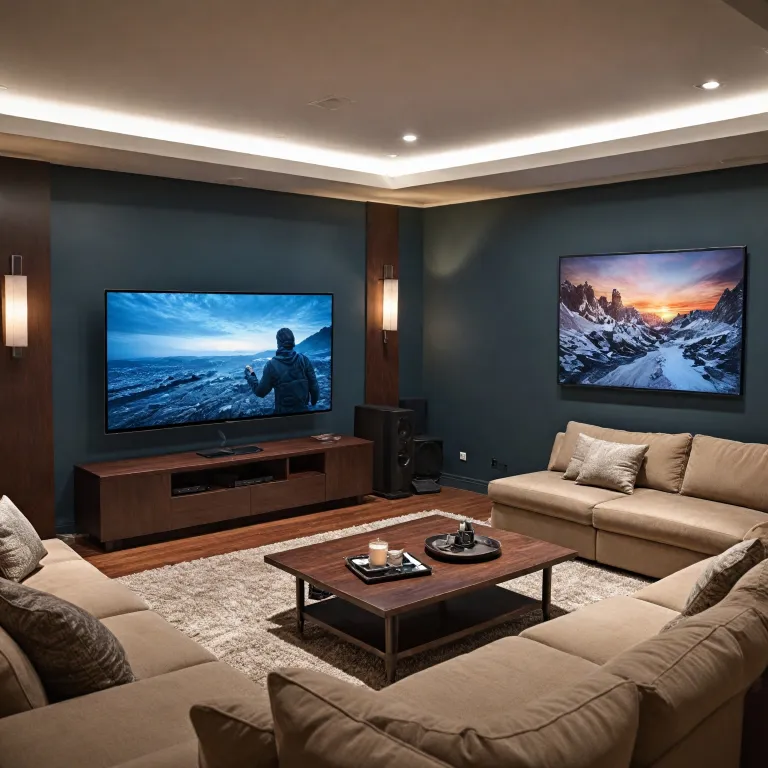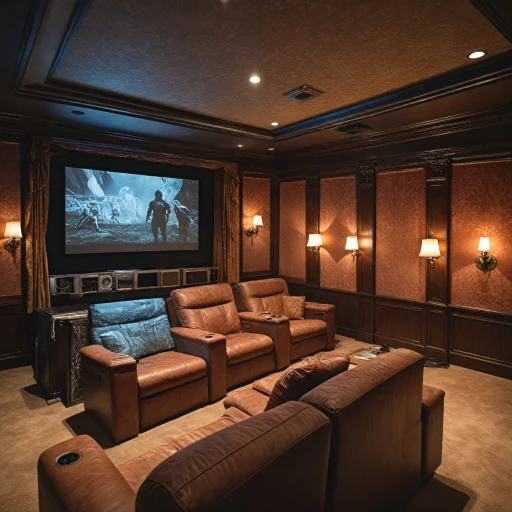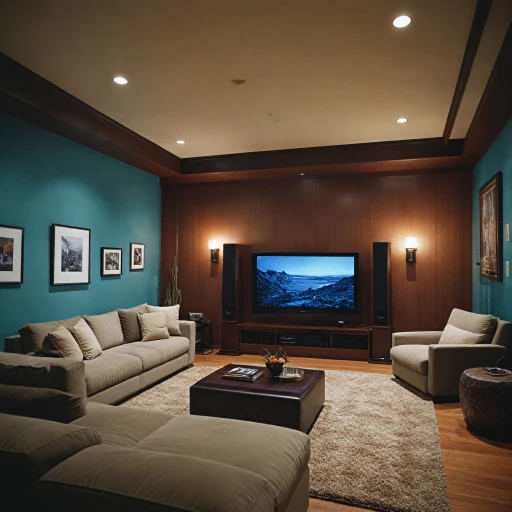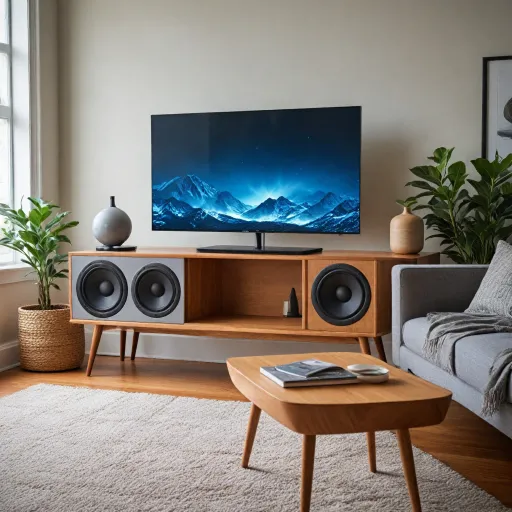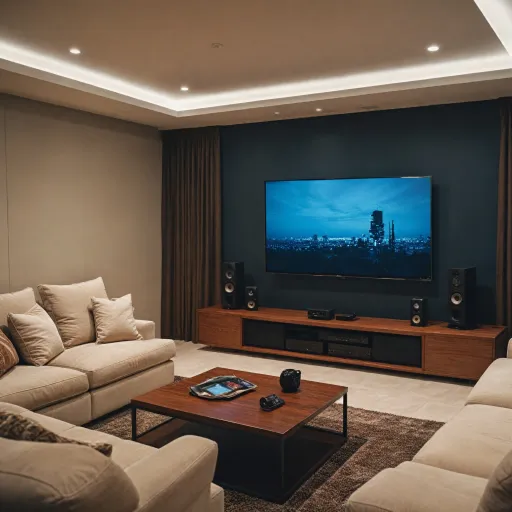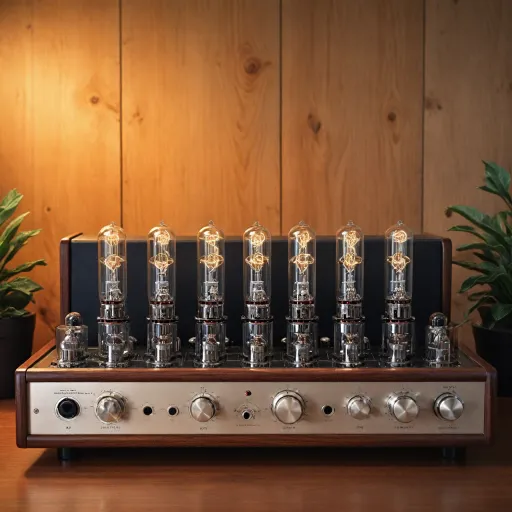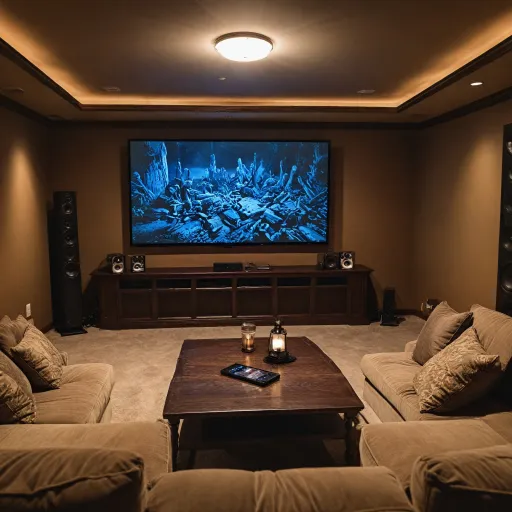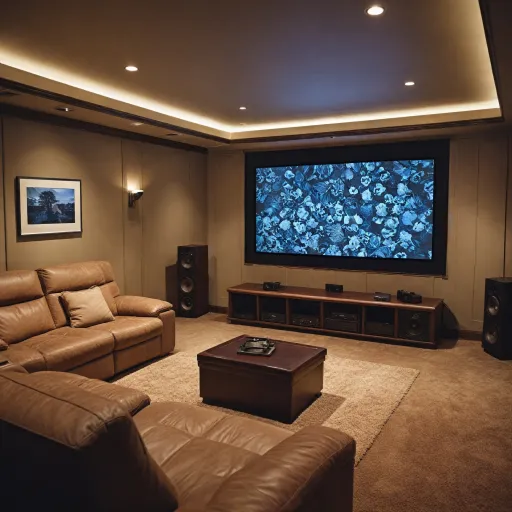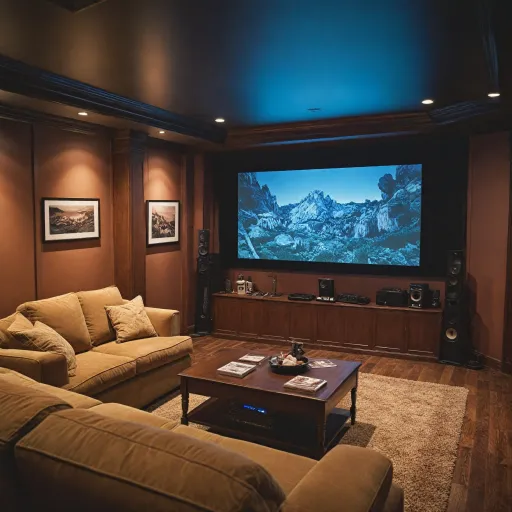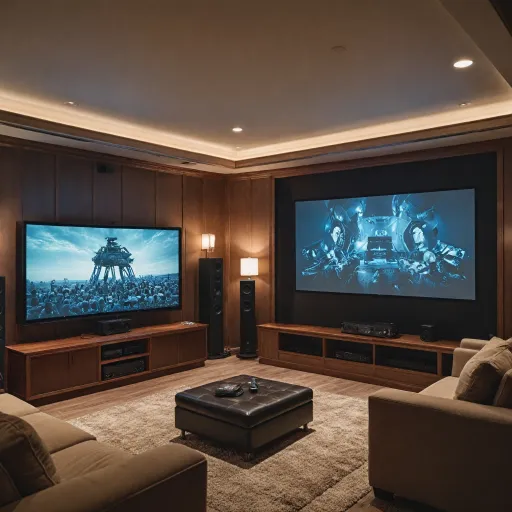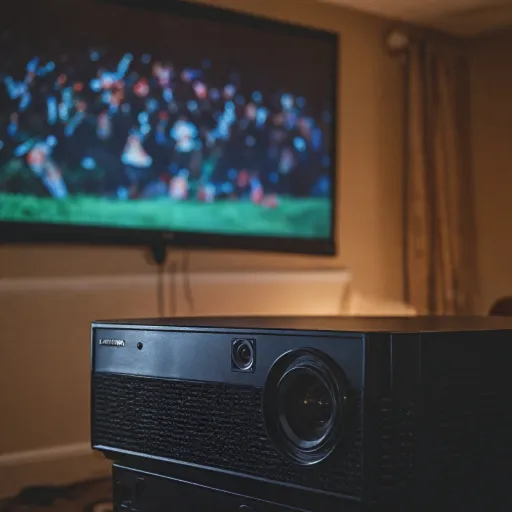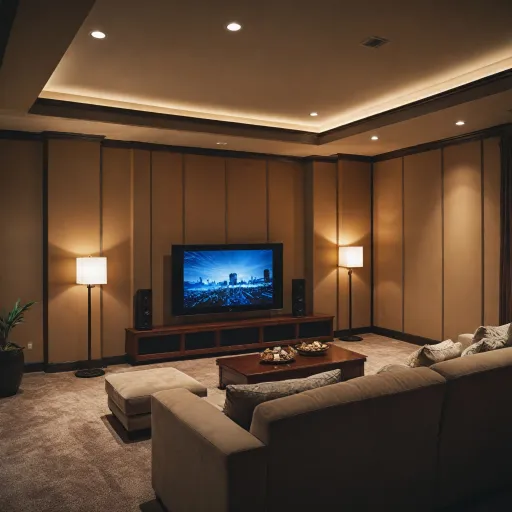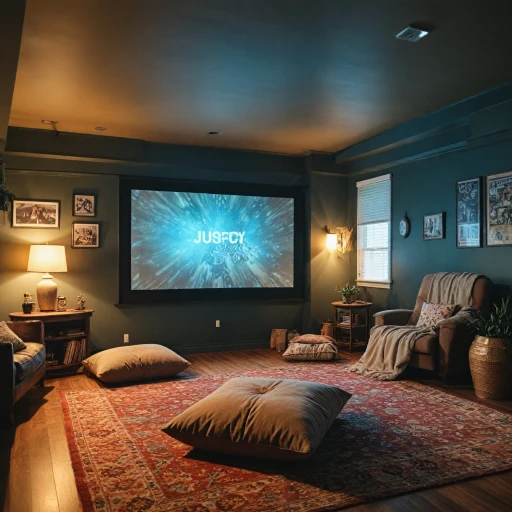
Understanding Home Theater Power Managers
What is a Home Theater Power Manager?
In the realm of home theater systems, a power manager is an essential component that ensures your audio and video equipment operates smoothly and safely. These devices, often referred to as power conditioners or surge protectors, are designed to regulate and stabilize the electrical power that flows to your home theater equipment. By doing so, they protect your valuable gear from voltage spikes and surges that can cause damage over time.
Why You Need One
Power managers are not just about protection; they also enhance the overall performance of your home theater system. By filtering out electrical noise and providing clean power, they can improve sound quality and picture clarity. This is particularly important for projectors, which can be sensitive to power fluctuations. A reliable power manager can be the difference between a seamless viewing experience and one plagued by interruptions.
Types of Power Managers
There are several types of power managers available, each with its own set of features and benefits. Some focus on surge protection, while others offer advanced power conditioning capabilities. Popular brands like Panamax are known for their robust protection and noise filtering features. When choosing a power manager, consider the specific needs of your home theater setup, including the number of outlets required and the level of surge protection needed.
Integration with Your Home Theater System
Integrating a power manager into your home theater system is a straightforward process, but it requires careful consideration of your existing equipment and power needs. Proper installation and setup are crucial to ensure optimal performance and protection. In the following sections, we'll explore the benefits of using a power manager with your projector and provide tips on installation and setup to help you get the most out of your home theater experience. For more insights on enhancing your setup, check out this guide on amplifiers.
Benefits of Using a Power Manager with Your Projector
Why You Should Integrate Power Managers with Your Projector
Integrating a power manager with your home theater projector offers a series of significant benefits that enhance your overall viewing experience. Given that theatrical setups demand more energy and precision, a power manager becomes an essential investment.
- Surge Protection: One of the primary roles of a power manager is to act as a surge protector, safeguarding your expensive home theatre equipment from voltage spikes and surges. This protection extends the lifespan of your projector by preventing electrical damage.
- Voltage Regulation: Power managers, also known as power conditioners, ensure stable voltage levels, which is crucial for preventing performance issues and avoiding damage to sensitive components within your projector and other audio video equipment.
- Improved Sound and Picture Quality: By reducing electrical noise and interference, a high-quality power conditioner can actually enhance your audio and video output, providing a clearer, more immersive experience.
- Convenient Power Management: With multiple outlets and systems like the Panamax, it's easier to organize and control power flow to different components such as amplifiers and sound systems, creating a streamlined and organized power management setup.
- Protective Failure Safeguard: In addition to surge protection, power managers often include fail-safe mechanisms that disconnect power during catastrophic surge events, further safeguarding your projector.
Investing in the best power manager for your home theatre ensures not only protection but also elevates your system’s performance to a great extent, making your viewing experience richer and more impactful.
Key Features to Look for in a Power Manager
Essential Features to Optimize Your Setup
When setting up your home theater system, choosing the right power manager is crucial. These devices provide surge protection and ensure stable voltage, both of which are essential for maintaining the longevity and performance of your equipment. Let's dive into some of the key features you should consider:- Surge Protection: A reliable theatre power manager should act as a superior surge protector. This feature shields your devices against voltage spikes, providing peace of mind and safeguarding your investment.
- Multiple Outlets: Look for a power manager that offers enough outlets to accommodate all your audio and video equipment. This ensures that your home theatre system is fully integrated without overloading individual circuits.
- Noise Filtering: High-quality power conditioners help eliminate electrical noise, enhancing audio and visual performance for a more immersive experience.
- Voltage Regulation: Consistent power levels prevent your projector and other devices from experiencing power fluctuations, which can improve their reliability and lifespan.
- Easy Installation and Setup: The best home theater power managers offer intuitive setup processes, making them user-friendly and reducing the risk of incorrect installation.
- Brand Reputation: Reputable brands, such as Panamax, are known for their effective power conditioners and surge protectors, ensuring great protection for your system.
Installation and Setup Tips
Setting Up Your Home Theater Power Manager
When it comes to installing a power manager in your home theater system, it's essential to consider some crucial steps that can make the process smoother and more efficient.First up, take stock and organize your home theater equipment. This step is fundamental, as you will want all audio video components including your projector, amplifier, and any other gear to have access to sufficient power outlets. Look for a power manager with enough outlets and the right type of connections to accommodate your gadgets.
Once you have your equipment ready, consider the placement of your power manager. Ideally, it should be situated close to your audio video components to minimize cable clutter and ensure that power cables can reach comfortably. Remember, proximity can also assist in managing noise and interference, as shorter cables tend to offer better sound quality.
Next, focus on integrating surge protection into your setup. Many theater power managers double as surge protectors and power conditioners, safeguarding your home theater from unexpected voltage spikes. This feature is vital for preventing damage to your equipment and maintaining consistent performance.
Connecting your devices to the power manager is typically straightforward. Ensure all cables are secure and fit snugly into the outlets. Some managers offer a conditioner surge feature to help in conditioning the voltage and reducing noise, which is perfect for maintaining the best home sound quality.
Check out popular options on platforms like Amazon, where brands like Panamax are often recommended for their reliable surge protection and noise filtering capabilities. Comparing features can help you find the best fit for your theater power needs.
Lastly, always read the manual that comes with your power manager. This document will provide specific instructions and recommended configurations that align with the features of your system.
Common Challenges and Solutions
Navigating Common Setbacks with Power Managers in Your Home Theater System
While incorporating a power manager into your home theater system is a great way to enhance performance and safeguard expensive audio video equipment, there are certain challenges one might face. Here's a brief look at some common issues and practical solutions:
- Electrical Noise Interference: One frequent complaint among users is the introduction of electrical noise. This can arise from improper grounding or poor quality surge protectors. Opting for a reliable power conditioner or a top-tier power manager equipped with noise filtering features can significantly mitigate this issue.
- Inadequate Surge Protection Capacity: Surge protectors, though designed to shield your home theatre system from voltage spikes, sometimes fail due to insufficient surge protection rating. Investing in a manager power solution with a higher joule rating can offer better surge protection and prolong the life of your equipment.
- Overloaded Outlets: With multiple devices, including projectors and amplifiers, often connected to a single power manager, the risk of overloading becomes a concern. It's crucial to choose a power strip with ample outlets and check the total power capacity to avoid overwhelming the power manager.
- Power Management Setup Issues: Incorrect installation or setup of power conditioners or theatre power rigs can result in more harm than good. Following the manufacturer's instructions diligently or consulting a professional can ensure that your system is set up correctly, allowing for optimum power management.
By addressing these typical challenges with appropriate solutions and using reliable products from renowned brands like Panamax, available on platforms such as Amazon, you can achieve an efficient and well-protected home theater system. Consider models that offer not just surge protection, but also comprehensive power conditioning capabilities to ensure the best home theater experience.
Top Power Manager Recommendations
Top Picks for Power Managers in Home Theaters
When it comes to enhancing your home theater system, choosing the right power manager can make a significant difference. Here are some of the best options available on the market, each offering unique features and benefits for your audio video setup:
- Panamax MR4300: Known for its excellent surge protection and noise filtration, the Panamax MR4300 is a top choice for many home theater enthusiasts. It offers multiple outlets and a sleek design, making it a great addition to any setup.
- Furman PL-8C: This power conditioner is renowned for its advanced surge protection and voltage regulation. It’s perfect for those looking to protect their equipment while ensuring optimal sound quality.
- APC J25B: With its battery backup feature, the APC J25B provides peace of mind during power outages. It also includes a variety of outlets, making it versatile for different equipment needs.
- Tripp Lite LC1200: Offering automatic voltage regulation, the Tripp Lite LC1200 is ideal for maintaining consistent power levels. Its compact design and affordability make it a popular choice.
- Belkin BE112230-08: This power strip surge protector is perfect for those on a budget. It provides basic surge protection and multiple outlets, making it a practical option for smaller setups.
Each of these power managers offers distinct advantages, from surge protection to noise reduction, ensuring your home theater equipment remains safe and performs at its best. When selecting a power manager, consider the specific needs of your system, including the number of outlets and the level of surge protection required.
